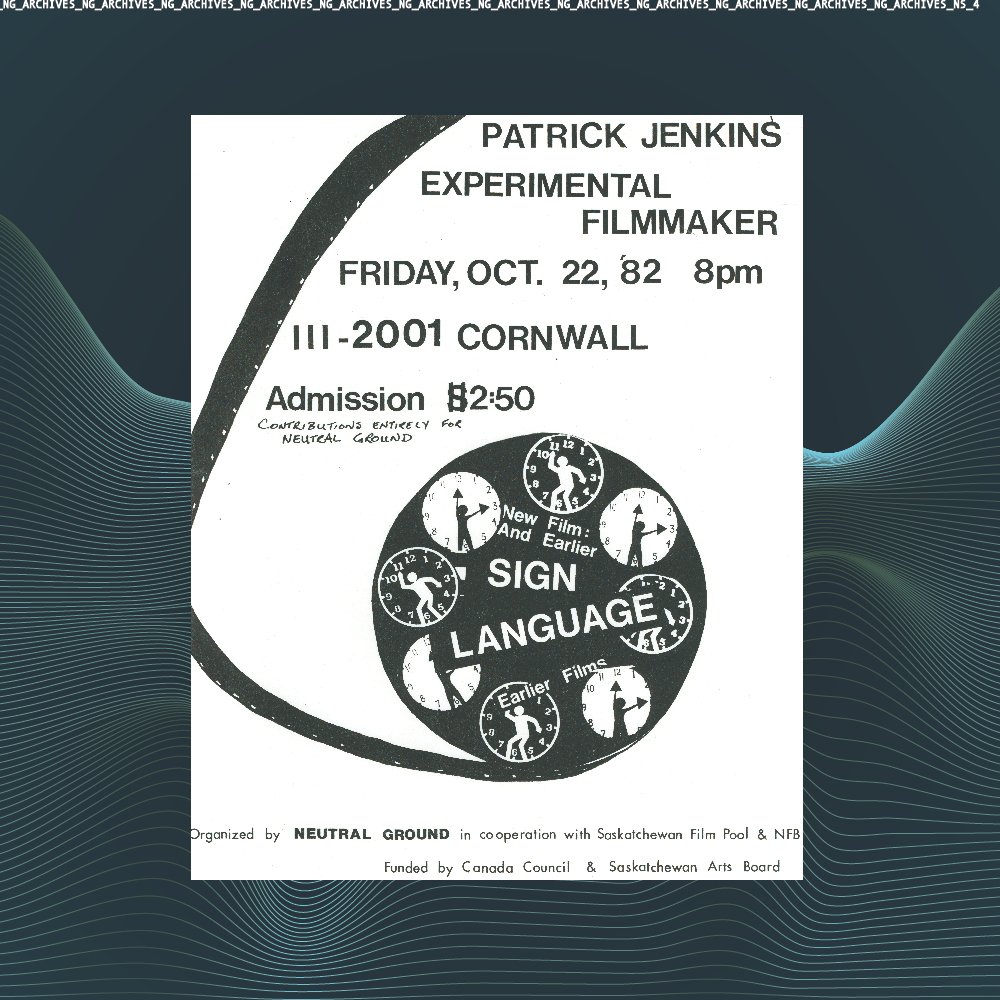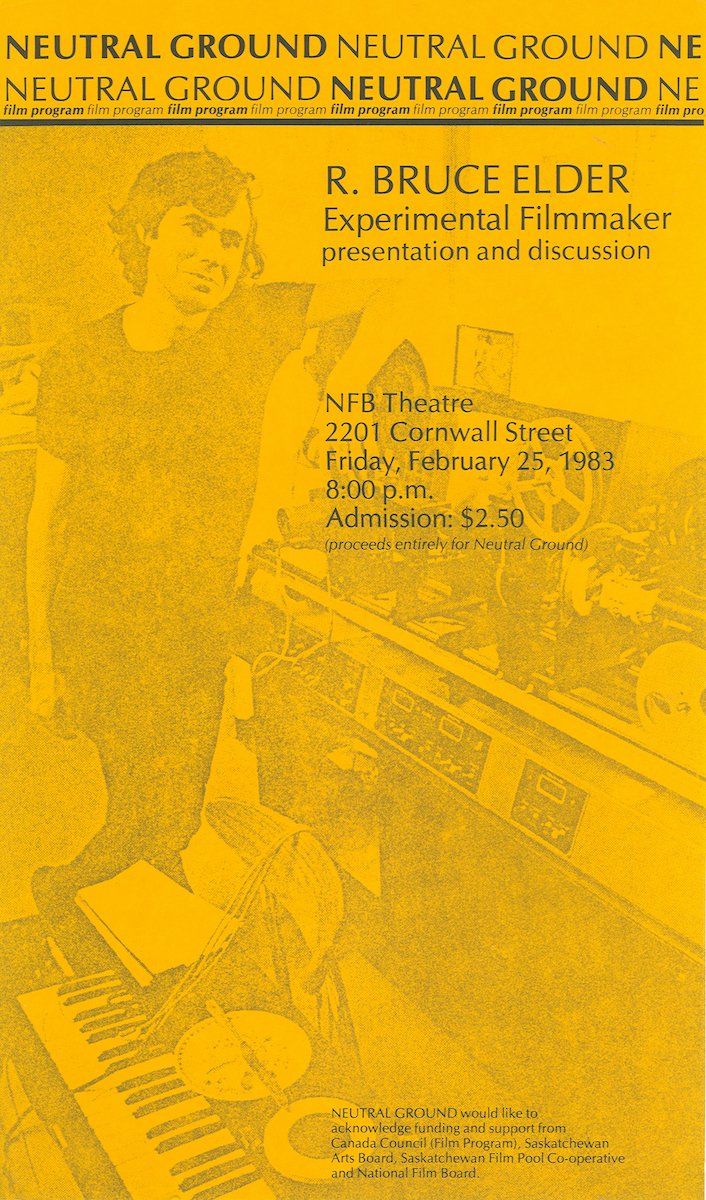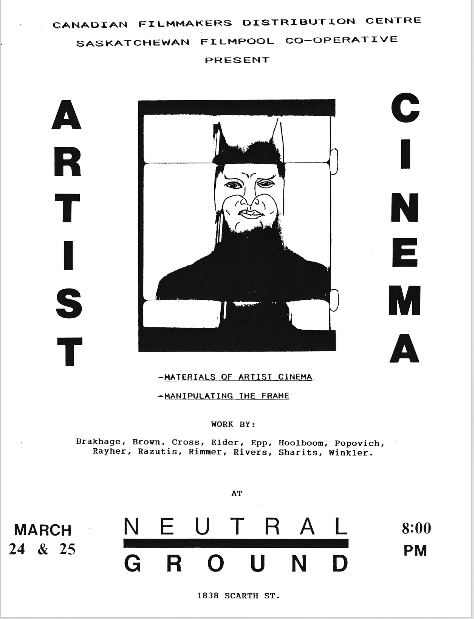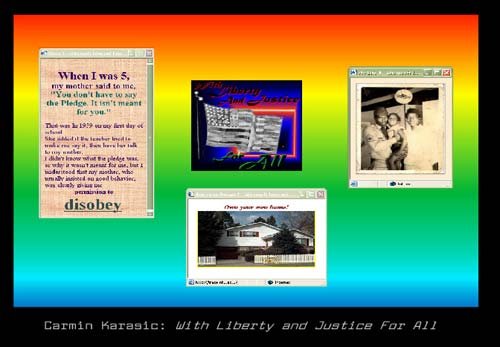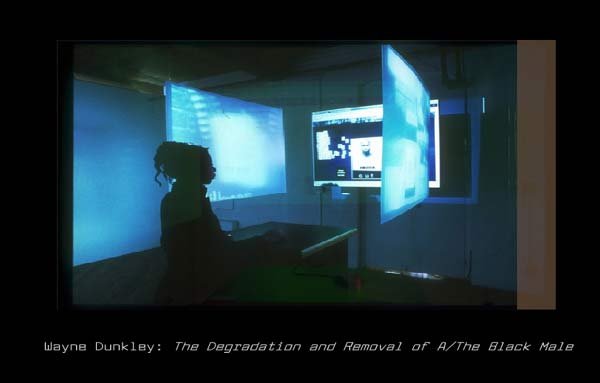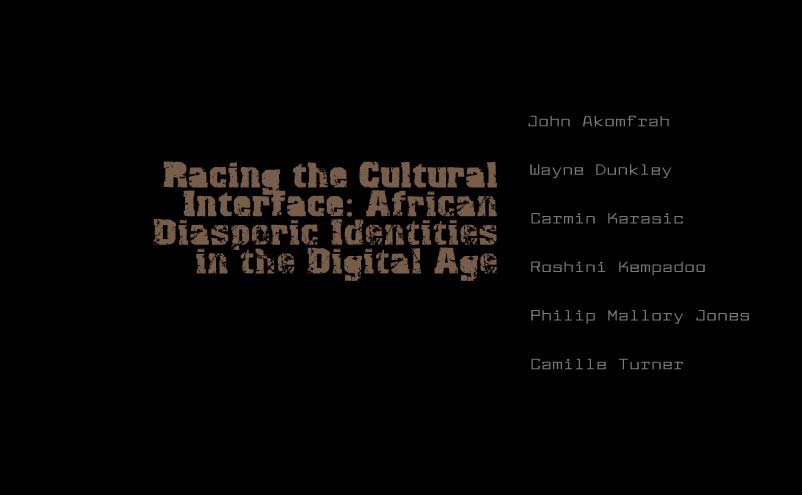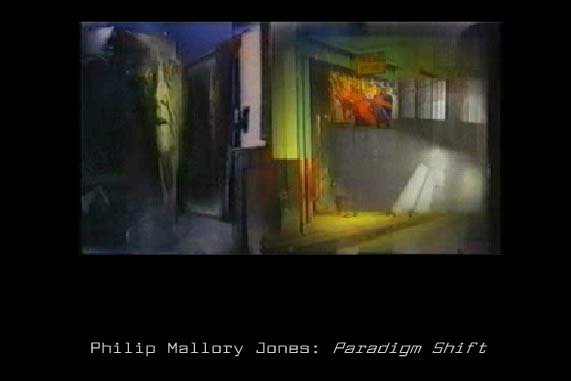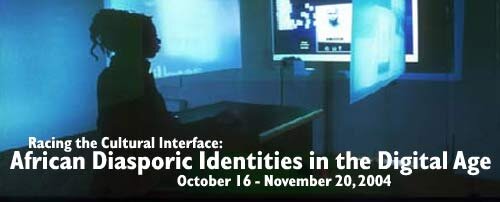Neutral (?) Ground: Piecing together concepts of legacy through archival materials and conversation
Editor’s Note: As the Filmpool celebrates our 45th anniversary this year, Neutral Ground celebrates its 40th year of offering space to artists of all mediums and styles. Over the years, Neutral Ground and Filmpool have collaborated on various events and Neutral Ground has shown work by Filmpool members. To help them celebrate this amazing milestone, we’re sharing this piece by a recent summer student about where Neutral Ground has been and where it’s looking to go.
On a fall afternoon in 1982, artist Nida Home Doherty made her way to Wascana Lake with a homemade raft and an idea. The eight-by-eight platform lined with sod was set afloat with the intention of acting as a stage for artists to perform. In the eyes of Doherty, the raft represented a symbolic “neutral ground” in which artists could share their work free from the confines of a traditional gallery space. Since its metaphorical and physical launch onto the waters of Wascana Lake, Neutral Ground Artist-Run-Centre has played a major role in enriching the artistic community of Regina. Neutral Ground was launched with the ethos of creating a nurturing environment in which artists can explore experimental mediums and new methodologies. Emerging and mid-career artists situated outside larger artistic hubs are often challenged with difficulties in finding spaces that support their experimental creative practices. Over the years, projects undertaken by Neutral Ground —such as Soil Digital Media Suite, which ran from 1997-2005 — have served this community by creating a public venue for artists to engage with budding technology and share their work, both with like-minded artists and the larger community of Regina.
Saskatchewan Filmpool Cooperative, five years Neutral Ground’s senior, has paved a space for experimental filmmaking in the province. Over the last four decades, the two organizations have built an , important partnership that has created a platform for the screenings of experimental filmmakers such as Stan Brakhage, R. Bruce Elder, Patrick Jenkins, and others. Through collaboration, Neutral Ground and the Filmpool have been able to encourage the longstanding celebration of non-commercial approaches to filmmaking and artistic interventions using film, and later video, that continue to this day from either side of the cobblestoned Scarth Street pedestrian walkway.
Working with Neutral Ground in the roles of Gallery Assistant, Summer Student and Events Coordinator between 2021-2022, I have been fortunate enough to gain an individualized understanding of the organization’s history through seeking interaction with past and present community members. In this way, I have gained unique snapshots of what the organization has meant to various members at their various points of artistic development.
One such instance was a conversation with former exhibiting artist and board member Sandee Moore, who shared with me her first experience working with Neutral Ground. Having just moved to Regina as a graduate student in 2000, Moore was approached by Neutral Ground to produce a durational performance piece in what was then called the Project Room. In Sick and Hunger was performed over the span of five days which saw Moore cook, construct, and then eat a five cubic feet gingerbread house. In our conversation, Moore recounted the risk taken by the staff of Neutral Ground as well as their complete willingness to allow her to try something new, outside the realm of the static white cube. Moore recalls this performance fondly as one of her first experiences sharing a performance piece in an established gallery space. This ethos of working with artists looking to try something different would remain a defining element of Neutral Ground well into the future.
Picking up the ongoing project of digitizing the organization’s 40 years of ephemera — which had been begun by former Gallery Assistants such as Holly Aubichon and Cyril Chen — I was able to interact with Neutral Ground’s legacy of programming in a unique way, shaping my impressions of the organization over its various stages of being. I was able to contextualize the ways in which Neutral Ground served as a hotspot for collaboration over the years. A favourite example of this was the discovery of a 2004 exhibition titled Racing the Cultural Interface: African Diasporic Identities in the Digital Age which combined the work of six artists, all hailing from different regions of North America. Curated by Sheila Petty, the exhibition questioned what it means to be Black in the digital age, who is contributing to concepts of resistance, and what tactics are needed to insight change. This exhibition brought together the perspective of these artists through performance, digital art, interactive cinema, and web-based work. Artists who worked across different mediums and different parts of the globe were able to explore a common thread through Neutral Ground, creating a dynamic exploration of the African Diaspora from the voices of multiple artists.
In my time working for Neutral Ground, I have noticed the rich sense of community the organization inspires. At opening receptions, workshops, and artist talks there's always a familiar face of someone who has found a place for themselves at Neutral Ground. Of course, the organization has seen its fair share of hardships. Whether that be through location instability, budget cuts, or countless other difficulties that go along with being an artist-run centre. However, despite it all, Neutral Ground has managed to stay above water, and with the advent of Neutral Ground’s 40th anniversary, it's important for the organization to look inwards and question, “How can a space be truly neutral? Is this even possible?” We must acknowledge that there is always work to be done in the way of including the voices of those who have gone unheard in the past. As we move forward in our quest to create a space for those who have been under or misrepresented to share their experience, we hope to embody that spirit of artists rallying together which Neutral Ground was launched on. We must also acknowledge that true neutrality is not attainable, but a goal to learn from and with the community around us in a desire to create an ever-evolving and increasingly inclusive space is.

